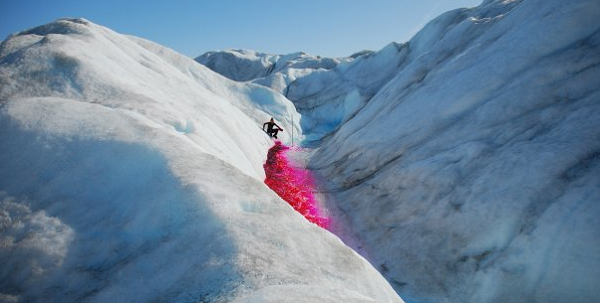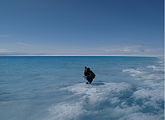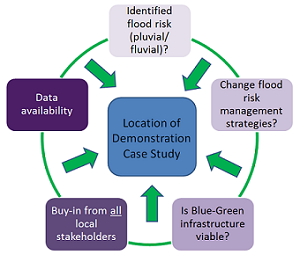
August 12, 2013, by Blue-Green team
About the Blue-Green Cities team…Emily Lawson
The first couple of blog posts for Blue-Green Cities will give some insight into the members of the interdisciplinary consortium; their backgrounds, role in the Blue-Green Cities Research Project and what they have been working on at present. And I’m going to start. I’m Emily Lawson, and my role in the project is to coordinate and assist research in the five work packages and to take care of all the social media and website (which is going in for final approval this week so should be up and running soon!) I will start with a bit of background information. I have a PhD in glacial biochemistry and worked on identifying and quantifying carbon compounds in glacial systems, notably the Greenland Ice Sheet, where I spent several field seasons collecting glacial runoff, ice, and snow for subsequent lab analysis. I also dyed glacial stream pink (dye tracing with rhodamine to determine runoff rates). You can find out a bit about my work here which details the commendation I received for my postgraduate thesis in 2012.
I did my undergraduate, Masters and PhD at the University of Bristol in the Geographical Sciences department. Since early lectures on river hydraulics and flooding I have always had an interest in hydrology, and my role in the Blue-Green Cities Research Project allows me to further explore this field. In addition to assisting and coordinating research within and between work packages (WP), I will be working on the Demonstration Case Study and future project dissemination (WP5). I am based at the University of Nottingham.
I have recently been researching potential Demonstration Cities for the Blue-Green Cities Research Project to focus on in year 3 (2015). We have a set of criteria that will help us choose the best city for the job (more details on WP5 page on the website). An important factor is stakeholder buy-in;
• Will the deliverables of the Blue-Green Cities Research Project be useful and timely for local policy makers?
• Can we provide a concept for a set of Blue-Green features that would fit in well with surface water/flood risk management plans?
• And are stakeholders responsive to approaches and discussion of future engagement opportunities?
Working with stakeholders needs to be strong from the outset to allow the co-production of knowledge and production of an effective plan that benefits as many stakeholder groups (often diverse) as possible.
Please check back soon for more information on the Blue-Green Cities team and updates on the new website.
No comments yet, fill out a comment to be the first




Leave a Reply